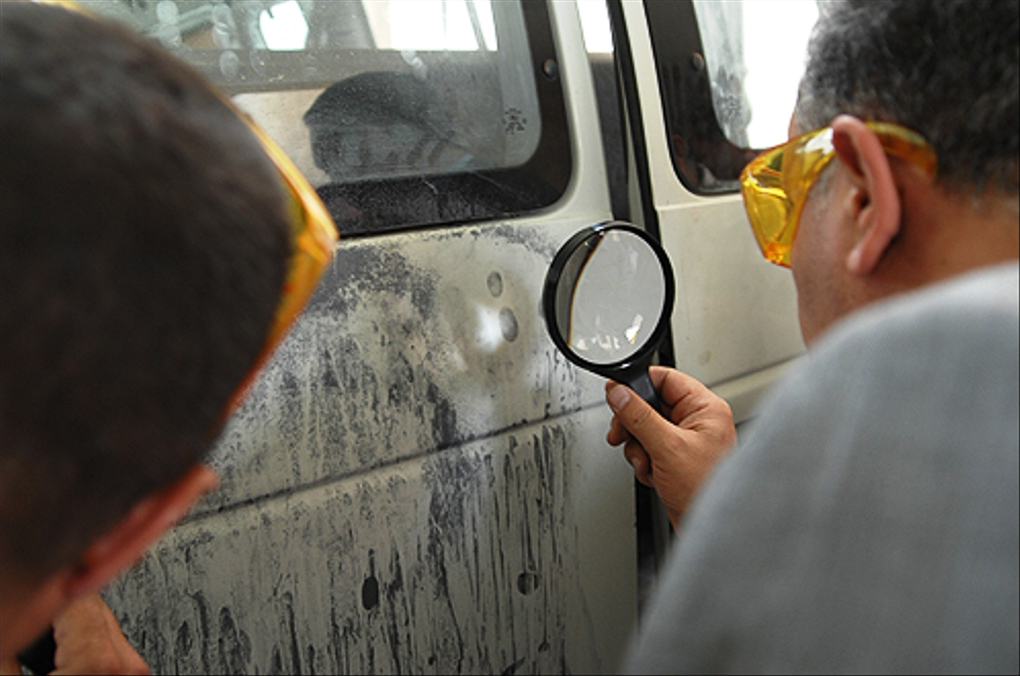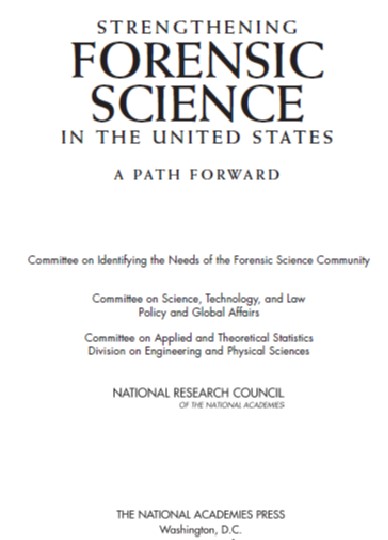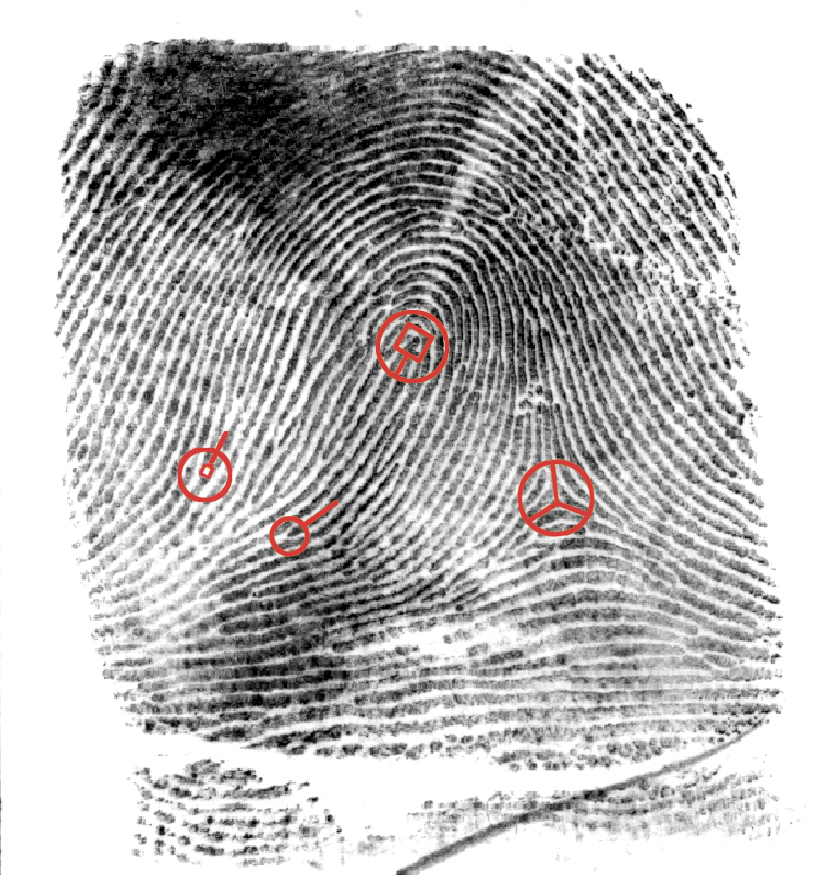At the start of the 21st century, we no longer look to fingerprints for information about human genetics. DNA – an incomparably more useful source of genetic information – has become more important for understanding human heredity, not to mention for practical applications of genetic science in anthropology, commercial ancestry testing, medicine, and forensic science.
While fingerprinting is still an invaluable technique for law enforcement and forensic science, it is no longer viewed as useful for research on more general questions of scientific interest, the very questions that had been the focus of decades of research in dermatoglyphics.
Image: “DNA Double Helix with Data.” Courtesy: National Human Genome Research Institute: https://www.genome.gov/image-gallery.
For more on how fingerprinting has developed in the early 21st century, watch this short lecture.
When we consider what the relationship between fingerprinting and science looks like today, we are almost certainly talking about how to use scientific knowledge to improve latent fingerprint evidence, or the forensic use of fingermarks discovered at crime scenes.
We find one discussion of this issue in the 2009 report of the National Research Council of the National Academies, “Strengthening Forensic Science in the United States: A Path Forward.” This report is an important document for understanding the present-day circumstances and challenges of forensic science in the United States.
In summarizing their evaluation of the strengths and weaknesses of different forensic disciplines, the authors of this report stated the following:
With the exception of nuclear DNA analysis… no forensic method has been rigorously shown to have the capacity to consistently, and with a high degree of certainty, demonstrate a connection between evidence and a specific individual or source. In terms of scientific basis, the analytically based disciplines generally hold a notable edge over disciplines based on expert interpretation [1].
As one of the disciplines “based on expert interpretation” mentioned in this passage, the field of latent fingerprint evidence was criticized in this report on various grounds. These included, for example, examiners’ reliance on “subjective judgments” during the process of interpreting crime scene fingermarks as well as the limited information that is available about potential sources of error within this process.
There has already been a great amount of research on every aspect of latent print evidence – from the examination and analysis of latent fingermarks to their interpretation as evidence. This recent work has included the development of procedures for presenting fingerprint evidence in probabilistic terms, studies of the subjective factors that affect fingerprint examiners’ decision-making, and empirical research on the accuracy of latent fingerprint examination practices and associated error rates [2].
Image: “Using ‘Minutiae’ to Match Fingerprints Can Be Accurate.” Courtesy National Institute of Standards and Technology. NIST Image Gallery: https://www.nist.gov/image/usingminutiaetomatchfingerprintscanbeaccuratejpg
The goal of today’s research is not about studying the genetics of fingerprint patterning or using fingerprints to diagnose medical conditions (some of the goals of 20th-century dermatoglyphics research). Rather, it is meant to provide a foundation of scientifically-validated data and methods on which the interpretation of latent fingerprint evidence can be based and, ultimately, improved.
Still, it is worth keeping the longer history of interactions between fingerprinting and science in mind. For example, it is not uncommon for today’s works on latent fingerprint evidence to cite older dermatoglyphics publications [3]. There is a wealth of information about the anatomy, embryology, and genetics of friction ridge patterning found in this older literature. This information is useful for gaining a basic understanding of what fingerprints are, why they take the form that they do, and sources of fingerprint variability. It is likely that academic works on latent fingerprint evidence will continue to cite this literature for a long time to come.
Ultimately, by attempting to place latent fingerprint evidence on a firmer scientific basis, today’s research is once again reimagining the relationship between fingerprinting and scientific knowledge, a project that has a long and complex history.
Sources
[1] National Research Council (2009). Strengthening Forensic Science in the United States: A Path Forward. The National Academies Press, Washington, DC.
[2] For a recent overview of such work, see Gary Edmond, Matthew B. Thompson, Jason M. Tangen. “A guide to interpreting forensic testimony: scientific approaches to fingerprint evidence.” Law, Probability and Risk 13, no. 1 (2014): 1-25.
[3] Daniel Asen. “Fingerprints and Paternity Testing: A Study of Genetics and Probability in Pre-DNA Forensic Science.” Law, Probability and Risk 18, nos. 2-3 (2019): 193-194.



